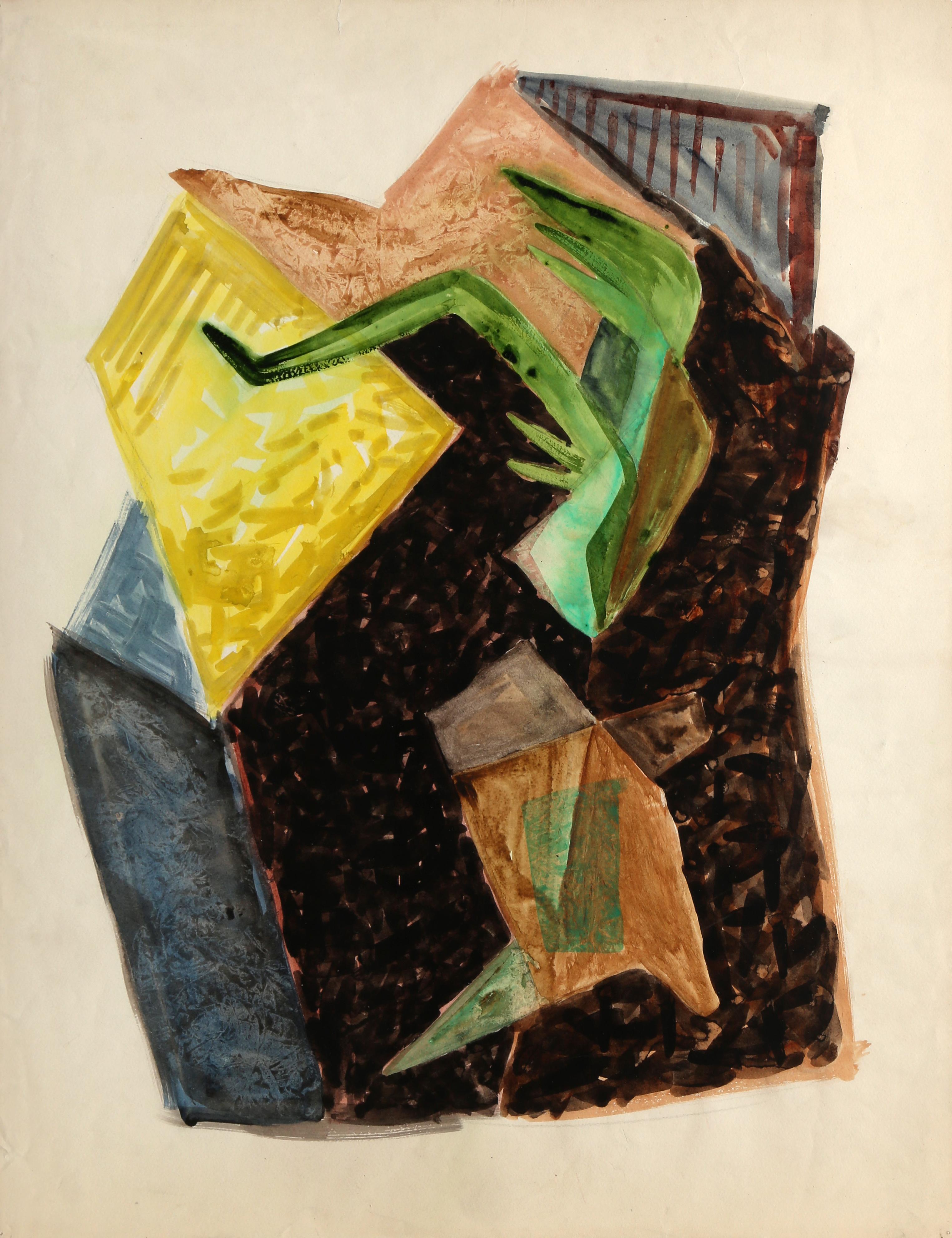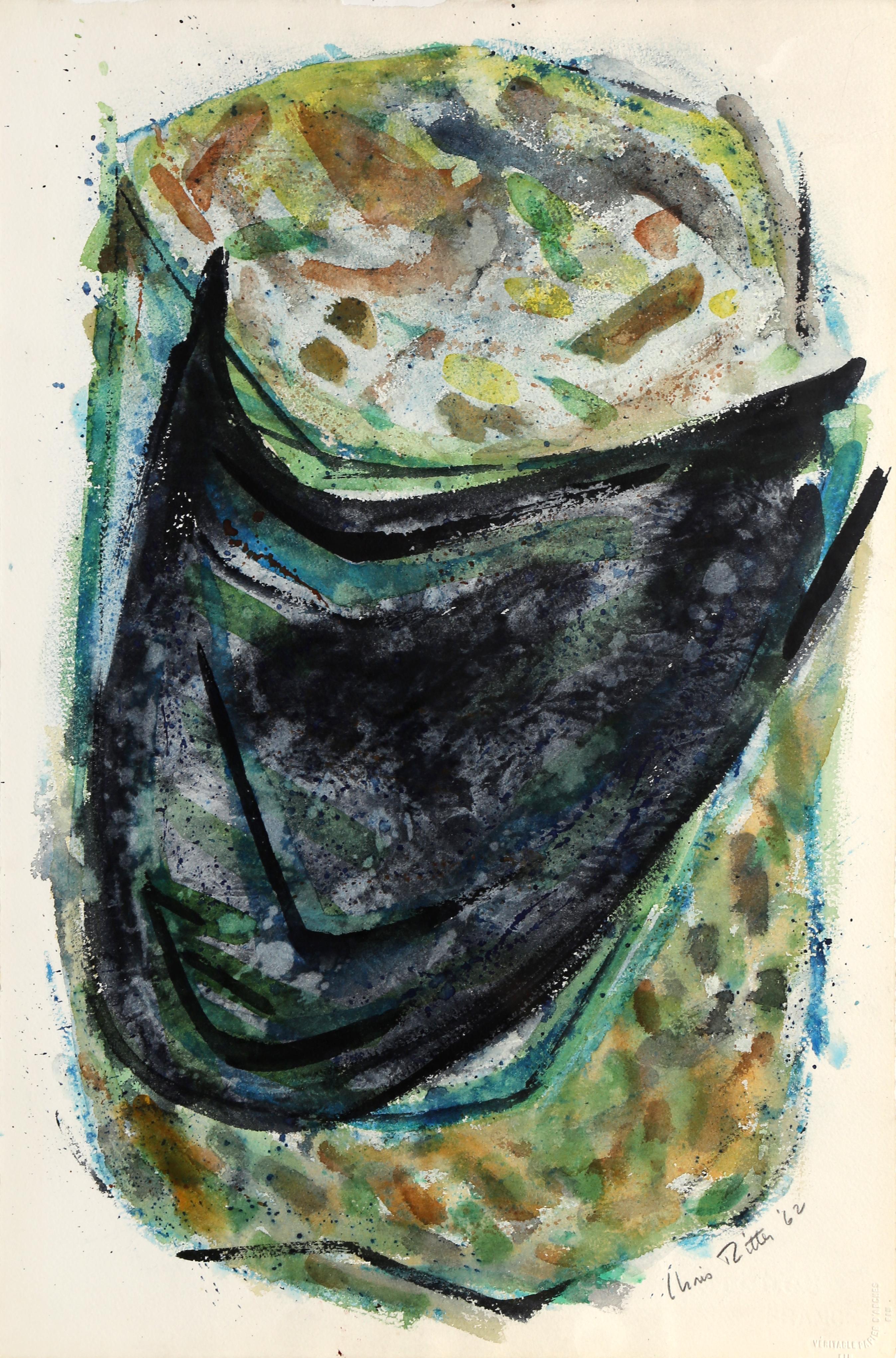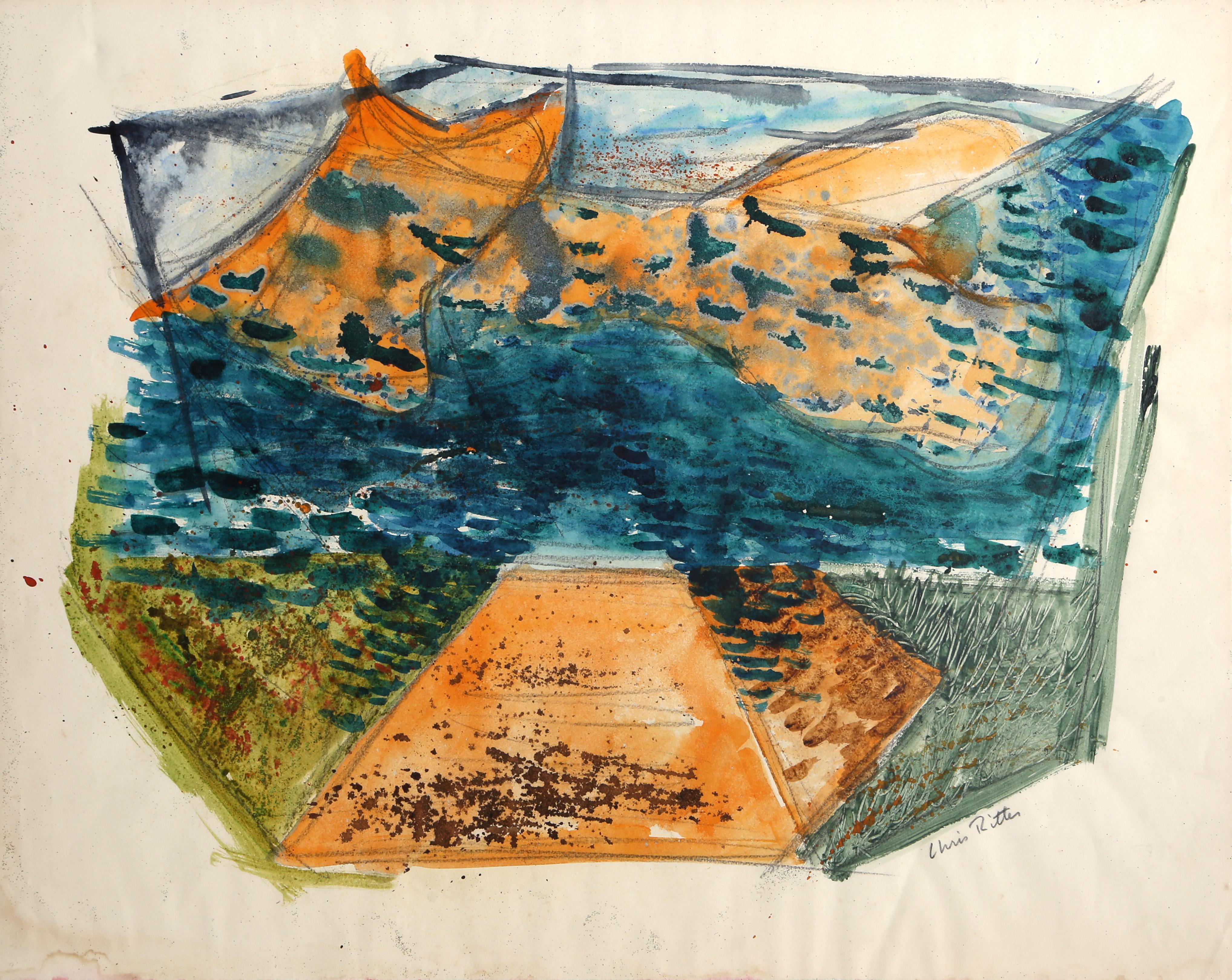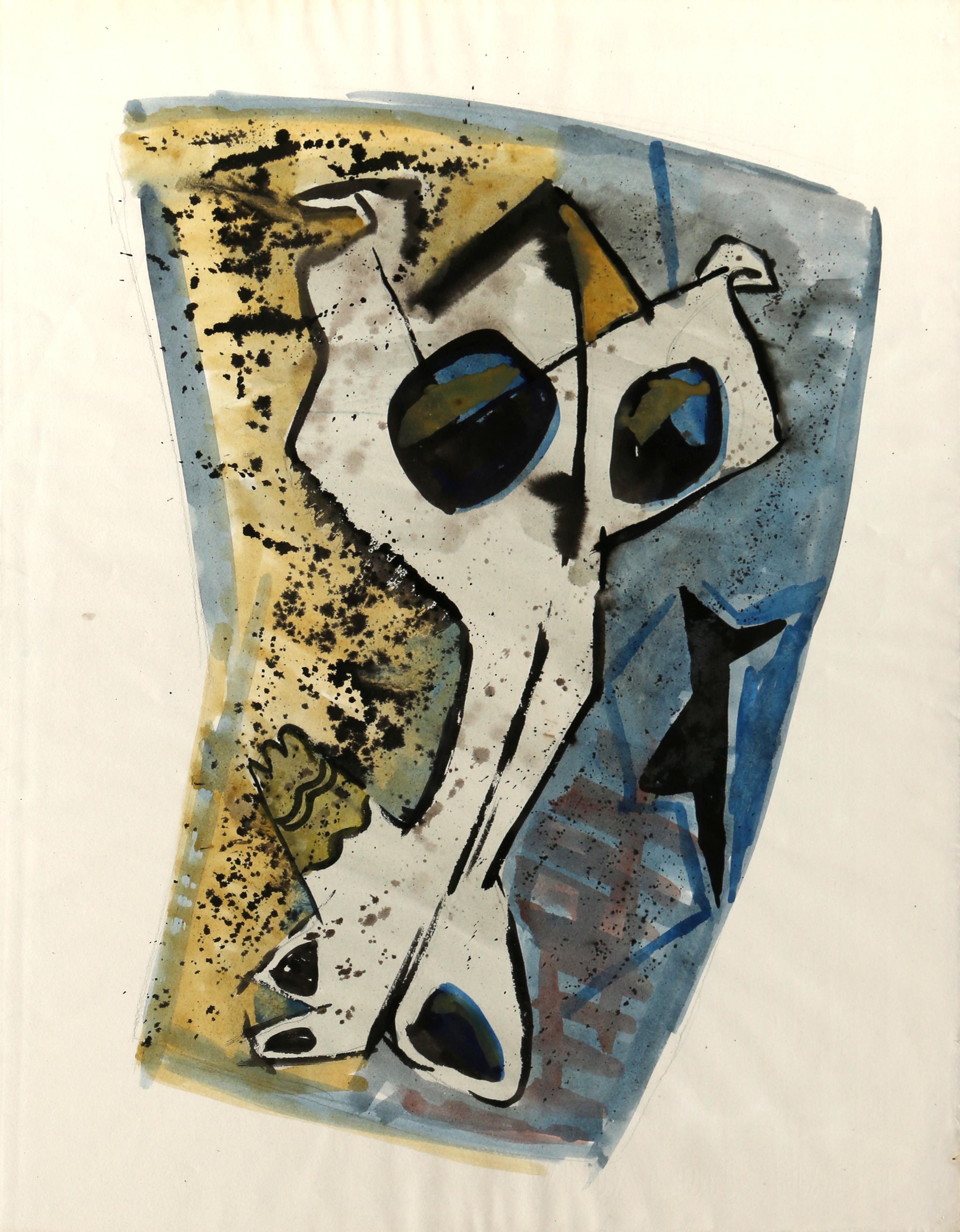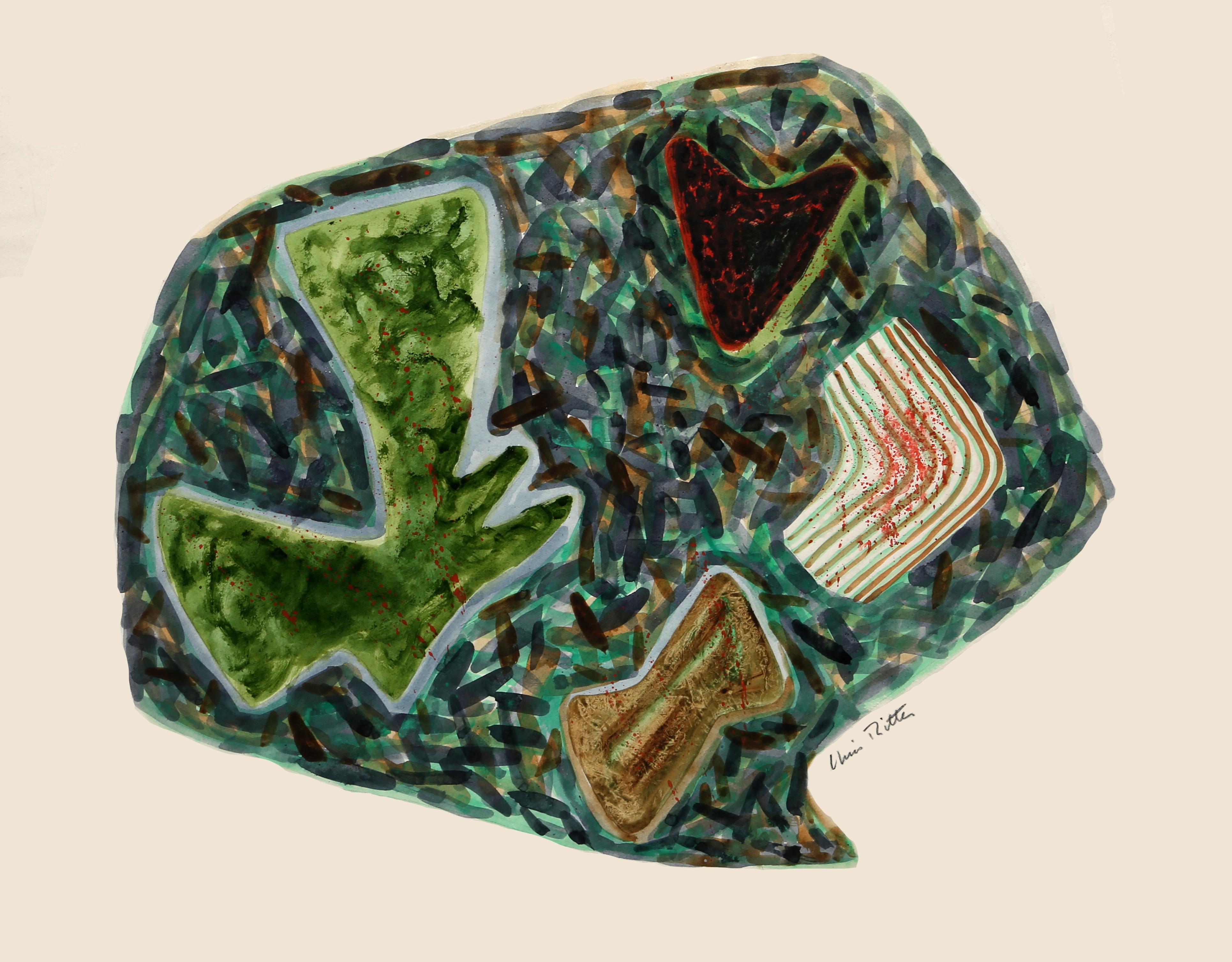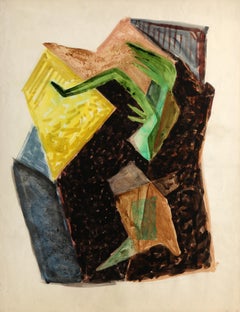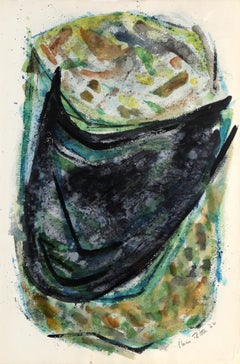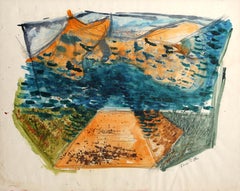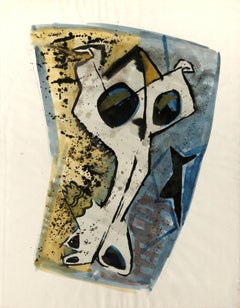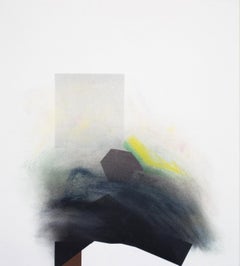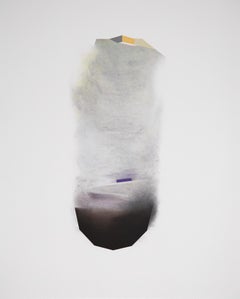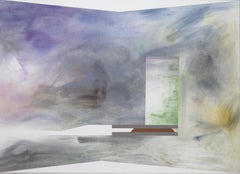Items Similar to Abstract #7, Abstract Watercolor by Chris Ritter
Want more images or videos?
Request additional images or videos from the seller
1 of 7
Chris RitterAbstract #7, Abstract Watercolor by Chris Rittercirca 1962
circa 1962
$2,400
£1,849.13
€2,112.29
CA$3,436.02
A$3,747.67
CHF 1,970.49
MX$44,973.70
NOK 24,879.59
SEK 23,205.87
DKK 15,775.68
About the Item
This unique abstract work is a watercolor by American artist Chris Ritter. The use of broad gestural movement and bold colors creates an engaging composition. This piece is signed by the artist.
Abstract #7
Chris Ritter, American (1906–1976)
Date: circa 1962
Watercolor on paper, signed lower left
Size: 22 x 17.5 in. (55.88 x 44.45 cm)
- Creator:Chris Ritter (1906 - 1976)
- Creation Year:circa 1962
- Dimensions:Height: 22 in (55.88 cm)Width: 17.5 in (44.45 cm)
- Medium:
- Movement & Style:
- Period:
- Framing:Framing Options Available
- Condition:
- Gallery Location:Long Island City, NY
- Reference Number:Seller: RO785171stDibs: LU46611628172
About the Seller
4.9
Platinum Seller
Premium sellers with a 4.7+ rating and 24-hour response times
Established in 1979
1stDibs seller since 2014
3,179 sales on 1stDibs
Typical response time: 1 hour
- ShippingRetrieving quote...Shipping from: Long Island City, NY
- Return Policy
More From This Seller
View AllAbstract #6, Watercolor Painting on Paper by Chris Ritter
Located in Long Island City, NY
This unique abstract work is a watercolor by American artist Chris Ritter. The use of broad gestural movement and bold colors creates an engaging composit...
Category
1960s Abstract Drawings and Watercolors
Materials
Watercolor
Black Sweep on Green, Abstract Watercolor Painting on Paper by Chris Ritter
Located in Long Island City, NY
This unique abstract work is a watercolor by American artist Chris Ritter. The use of broad gestural movement and bold colors creates an engaging composit...
Category
1960s Abstract Drawings and Watercolors
Materials
Watercolor
$1,920 Sale Price
20% Off
Abstract #4, Contemporary Watercolor by Chris Ritter
Located in Long Island City, NY
This unique abstract work is a watercolor by American artist Chris Ritter. The use of broad gestural movement and bold colors creates an engaging composit...
Category
1960s Abstract Drawings and Watercolors
Materials
Watercolor
Abstract #1, Abstract Watercolor Painting on Paper by Chris Ritter
Located in Long Island City, NY
This unique abstract work is a watercolor by American artist Chris Ritter. The use of broad gestural movement and bold colors creates an engaging composit...
Category
1960s Abstract Abstract Drawings and Watercolors
Materials
Watercolor
Abstract #3, Abstract Watercolor by Chris Ritter
Located in Long Island City, NY
This unique abstract work is a watercolor by American artist Chris Ritter. The use of broad gestural movement and bold colors creates an engaging composit...
Category
1960s Abstract Drawings and Watercolors
Materials
Watercolor
$1,800 Sale Price
20% Off
Untitled, Abstract Expressionist Watercolor Painting by Soni Wallace
Located in Long Island City, NY
Artist: Soni Wallace
Title: Untitled - Abstract
Year: circa 1962
Medium: Watercolor
Size: 9.5 in. x 14 in. (24.13 cm x 35.56 cm)
Category
1960s Abstract Abstract Paintings
Materials
Watercolor
You May Also Like
Oddballs #7 : contemporary abstract work of art
Located in New York, NY
Drawn from her imagination, Paula Elliott’s modern abstract works of art depict mysterious objects. In her works pastel has become the principal medium combined with charcoal, pencil...
Category
2010s Abstract Abstract Drawings and Watercolors
Materials
Charcoal, Pastel, Pencil
The Thing is Suite 8 #4
Located in New York, NY
Abstract work of art. Charcoal, pencil, pastel, and acrylic on paper.
Category
2010s Abstract Abstract Drawings and Watercolors
Materials
Paper, Charcoal, Pastel, Acrylic, Pencil
Oddballs #6 : contemporary abstract work of art
Located in New York, NY
Drawn from her imagination, Paula Elliott’s modern abstract works of art depict mysterious objects. In her works pastel has become the principal medium combined with charcoal, pencil...
Category
2010s Abstract Drawings and Watercolors
Materials
Pastel, Charcoal, Pencil
Markers #9 : contemporary abstract work of art
Located in New York, NY
Drawn from her imagination, Paula Elliott’s modern abstract works of art depict mysterious objects. In her works pastel has become the principal medium c...
Category
2010s Abstract Abstract Drawings and Watercolors
Materials
Paper, Charcoal, Pastel, Acrylic, Pencil
Abstraction #13, Mixed Media Abstract Watercolor on Paper by Alexander Kwiat
By Alexander Kwiat
Located in Soquel, CA
"Abstraction #13", beautiful modernist abstract color field watercolor in pastel hues on paper by Alexander Kwiat (American, b. 1955).
Signed lower right hand corner. Gallery label...
Category
1980s Color-Field Abstract Drawings and Watercolors
Materials
Paper, Watercolor
"Abstract Landscape, " Original Abstract Watercolor signed by David Barnett
By David Barnett
Located in Milwaukee, WI
"Abstract Landscape" is an original watercolor painting by David Barnett, signed in the lower right corner. It is a playful piece, characterized by lines and splotches of color, high...
Category
1960s Abstract Abstract Drawings and Watercolors
Materials
Watercolor
More Ways To Browse
Chris Ritter
Painting By Ritter
Shanthi Chandrasekar
Valente Painting
Beaver Painting
Train Depot
Vintage Watercolor Palette
Vintage Watercolour Palette
Painting And Motherwell
Roz Jennings Drawings
Richard Perry
Red Line Drawings
Black Ink Line Drawing
Davis Gray Watercolor
Citron Minna
Infanta Margarita
Sexual Photography
Ray Kass
